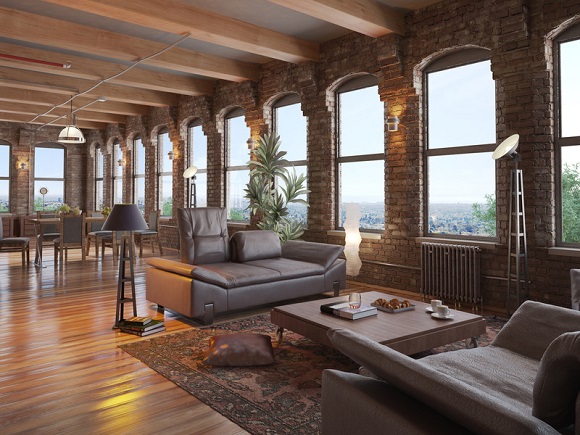Slowdown In Converting Vacant Dutch Commercial Properties Into Housing: Causes And Solutions

Table of Contents
Bureaucratic Hurdles and Planning Regulations
Navigating the complexities of converting vacant Dutch commercial properties into housing often involves significant bureaucratic obstacles. These hurdles significantly impact project timelines, costs, and ultimately, the feasibility of such conversions.
Complex Permitting Processes
The process of obtaining building permits and planning permission for these conversions is notoriously lengthy and complicated. This bureaucratic bottleneck acts as a major deterrent for developers and investors.
- Lengthy review times: Municipalities often take an excessive amount of time to process applications, leading to project delays and increased costs.
- Multiple approvals required: Conversions often require approvals from multiple government bodies, each with their own set of requirements and timelines. This fragmented system creates inefficiencies and delays.
- Unclear regulations: Ambiguous and outdated regulations surrounding building codes and conversion specifications contribute to uncertainty and further complicate the process.
- Lack of dedicated fast-track processes: The absence of streamlined processes specifically designed for housing conversions adds to the overall complexity and delays.
Delays can range from several months to even years, impacting project budgets significantly. The variation in approach between different local municipalities also contributes to unpredictability and frustration for developers. For instance, a project approved quickly in one municipality might face significant delays in another due to differing interpretations of regulations or local priorities.
Zoning Regulations and Land Use Restrictions
Outdated zoning regulations and restrictive land use policies often prohibit the conversion of commercial spaces into residential areas. These regulations, often designed for different eras and contexts, can make seemingly straightforward conversions impossible.
- Restrictions on building height: Limits on building height may prevent the efficient use of existing structures, limiting the number of residential units that can be created.
- Density limitations: Regulations restricting the number of residential units per square meter can hinder the viability of conversion projects, particularly in urban areas where space is at a premium.
- Parking requirements: Strict parking regulations, often designed for commercial spaces, can be challenging and expensive to meet in residential conversions, particularly in densely populated areas.
- Incompatibility with existing zoning plans: Many existing commercial buildings are located in areas zoned for commercial use, making residential conversions directly contradictory to the zoning plan.
Amendments to zoning plans are often lengthy and complex, requiring substantial time and resources. A flexible and adaptive regulatory framework is crucial to facilitate the smooth conversion of commercial properties into housing, allowing for innovative solutions and meeting the evolving needs of urban areas.
Financial Constraints and Investment Challenges
The financial aspects of converting vacant Dutch commercial properties into housing pose significant challenges, impacting the overall viability and speed of these projects.
High Conversion Costs
Renovating and adapting commercial buildings for residential use can be substantially more expensive than constructing new housing. This difference in cost often acts as a significant deterrent for investors.
- High material costs: The cost of building materials, particularly in the current market, significantly impacts the overall project expense.
- Specialized labor: Conversions often require specialized skills and labor, driving up labor costs.
- Asbestos removal: Many older commercial buildings contain asbestos, requiring costly and time-consuming remediation before conversion can begin.
- Structural reinforcement: Commercial buildings may require significant structural reinforcement to meet residential safety standards.
- Adaptation to energy efficiency standards: Bringing commercial buildings up to modern energy efficiency standards can also add significantly to the conversion costs.
A detailed cost breakdown reveals that conversion costs often exceed new construction costs, particularly in cases requiring extensive remediation and structural work. The unpredictability of hidden costs during the conversion process also contributes to investor hesitancy.
Limited Access to Financing
Securing funding for these conversions can be difficult, particularly for smaller-scale projects or those perceived as high-risk. Traditional lending institutions may be reluctant to finance such projects due to the uncertainties associated with conversion projects.
- Lack of tailored financial products: There is a lack of specific financial products designed for the unique circumstances of commercial-to-residential conversions.
- Stringent lending criteria: Banks and financial institutions often have stringent lending criteria that make it difficult for developers to obtain loans.
- Difficulty in assessing the profitability of conversions: Assessing the profitability of these conversions can be challenging due to the complexity of the process and potential unexpected costs.
The development of specialized financial products and government-backed loan programs could incentivize investment in this area and make these projects more financially viable. Alternative financing options, such as crowdfunding, could also play a role in overcoming funding limitations.
Market Demand and Property Suitability
The success of converting vacant Dutch commercial properties into housing also depends on market factors and the suitability of the available properties.
Mismatch between Supply and Demand
The available vacant commercial properties may not always be suitable for conversion into desirable housing types. A mismatch between the characteristics of the available properties and the preferences of potential residents can hinder the success of conversion projects.
- Location: The location of the commercial property is a crucial factor; a less desirable location will impact rental or sale prices.
- Size: The size and layout of the commercial space may not be ideal for residential use.
- Layout: Existing layouts may not easily translate into functional and desirable residential layouts.
- Accessibility: Accessibility for people with disabilities needs to be considered.
- Lack of outdoor spaces: Many commercial properties lack outdoor spaces, which are highly desirable in residential units.
- Outdated building infrastructure: Outdated infrastructure can lead to higher conversion costs and may not meet modern building codes.
Thorough market research is crucial to identify properties suitable for conversion and to understand the preferences of potential residents. This research can inform the design and development of conversion projects, increasing their likelihood of success.
Competition from New Construction
The availability of newly constructed residential developments can sometimes overshadow the attractiveness of converted commercial properties.
- Availability of new build homes: The supply of newly built homes directly competes with converted properties.
- Perceived quality differences: Potential buyers or renters may perceive newly built homes as higher quality than converted properties.
- Pricing pressures: Competition from new constructions can put downward pressure on the prices of converted properties.
Highlighting the advantages of converted properties, such as sustainability, unique character, and often central locations, can make them more competitive. Marketing efforts should emphasize the unique selling points of converted commercial properties to attract potential buyers and renters.
Conclusion
The slowdown in converting vacant Dutch commercial properties into housing is a multifaceted issue arising from bureaucratic hurdles, financial limitations, and market-related challenges. Addressing these issues requires a collaborative effort involving government agencies, financial institutions, developers, and local communities. Streamlining planning regulations, providing more accessible financing options, improving the suitability of existing properties for conversion, and raising public awareness of the benefits of this sustainable housing solution are crucial steps. By taking decisive action, the Netherlands can unlock the immense potential of its vacant commercial properties and contribute significantly towards resolving its housing shortage. Let's work together to accelerate the conversion of vacant Dutch commercial properties into housing and create more sustainable and livable communities.

Featured Posts
-
 Los Angeles Angels Winning Streak Halted At Eight By Marlins
May 28, 2025
Los Angeles Angels Winning Streak Halted At Eight By Marlins
May 28, 2025 -
 Nba 2 K25 Final Update Player Ratings Surge Before Playoffs
May 28, 2025
Nba 2 K25 Final Update Player Ratings Surge Before Playoffs
May 28, 2025 -
 Todays Lowest Personal Loan Interest Rates A Comparison Guide
May 28, 2025
Todays Lowest Personal Loan Interest Rates A Comparison Guide
May 28, 2025 -
 Penerbangan Langsung Jeddah Bali Rute Baru Saudia
May 28, 2025
Penerbangan Langsung Jeddah Bali Rute Baru Saudia
May 28, 2025 -
 Score Free Tickets To The American Music Awards In Las Vegas
May 28, 2025
Score Free Tickets To The American Music Awards In Las Vegas
May 28, 2025
